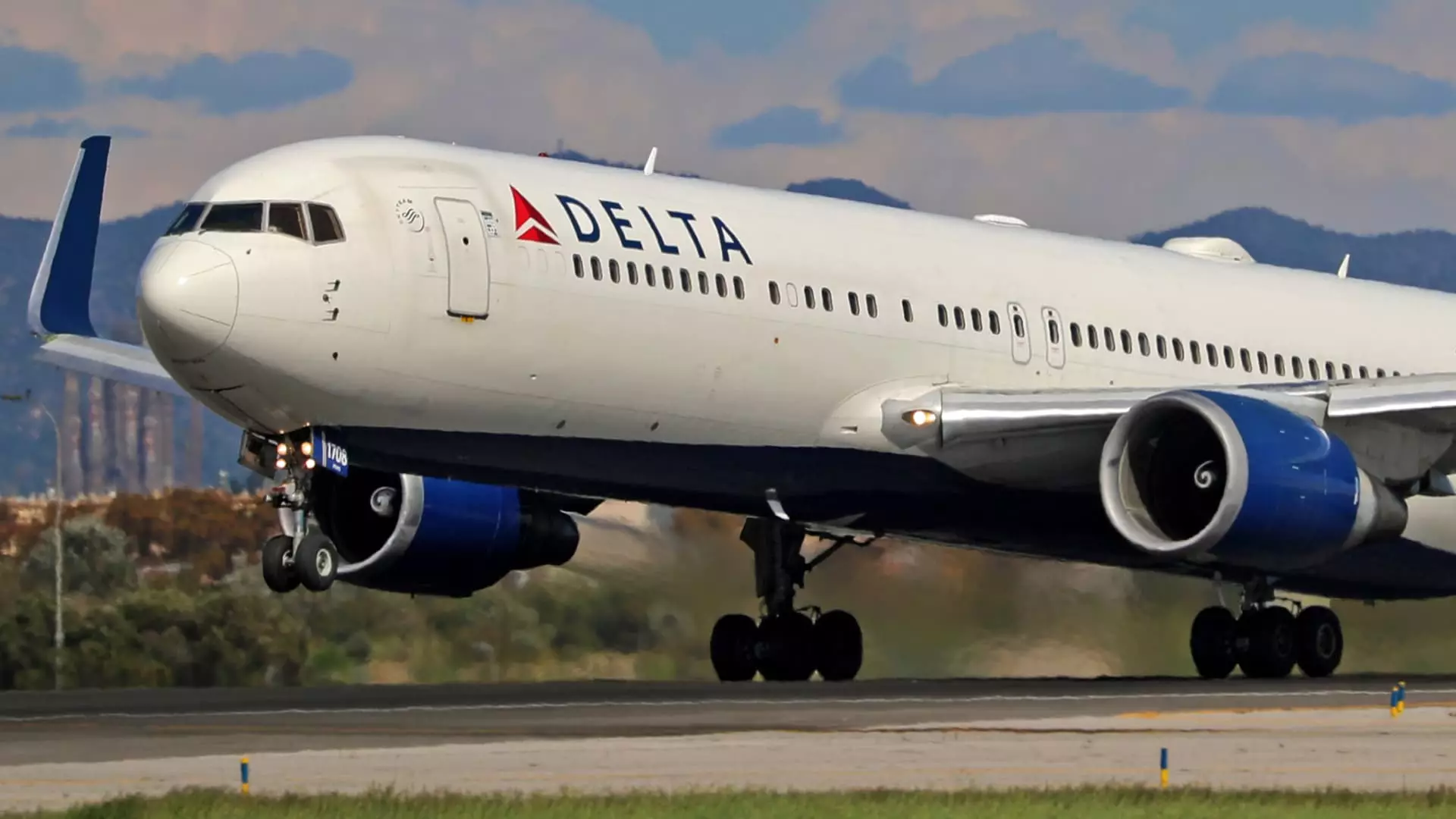The airline industry, which has weathered many storms, now finds itself on the brink of tumultuous upheaval. With disturbing signs of weakening demand punctuating the landscape, an unsettling narrative emerges. From dwindling travel bookings to mass layoffs, the indicators point toward an industry in distress. The current economic climate is steeped in uncertainty, and it is becoming increasingly clear that the skies may not be as friendly as they once appeared. Instead of the promised recovery post-pandemic, the airline sector might be staring down the barrel of a significant downturn.
The recent economic environment has seen rising tariffs, government layoffs, and a noticeable decrease in consumer confidence. Analysts are forecasting that U.S. airlines may significantly lower their earnings outlooks for 2025—a forecast that portends dire challenges ahead. The sentiment has turned bearish, with renowned analysts voicing their concern over the cracks forming beneath what was once an invincible facade of consumer travel prioritization. Amid such economic turbulence, it begs the question: how much longer can the airline industry sustain itself before it buckles under pressure?
Corporate Woes: Unproductive Policies and Their Repercussions
The economic policies put forth by the previous administration, particularly concerning global tariffs, have begun to haunt the airline sector. With a substantial 10% tariff impacting operational costs, airlines find themselves trapped in a quagmire of escalating expenses coupled with dwindling demand. Major airlines like Delta, American, and Southwest are now expressing caution, significantly revising their forecasts to reflect the grim fallout of waning customer interest.
While Delta has historically boasted a robust profit margin attributed to high-income passengers seeking premium experiences, even they are beginning to feel the pinch. This erosion of demand contrasts sharply with the pandemic-era crisis, wherein the abrupt cessation of travel was akin to a sudden freeze. Today, the demand hasn’t evaporated entirely; instead, it resembles a sluggish trickle that threatens to disrupt the operational viability of airlines. The stock market’s reaction, with Delta’s shares plummeting over 38% and American’s diving more than 45%, underscores the gravity of the situation. Aviation executives now find themselves in a precarious position, wherein maintaining profitability amidst declining demand has become an uphill battle.
The Changing Face of Travel: Consumer Behavior Reassessed
The once fervent appetite for global travel has noticeably cooled, and the statistics corroborate this assertion. Trends suggest a profound shift in consumer behavior, as bookings to popular international destinations in Europe have declined by approximately 13% compared to last year. This slump, observed in real-time data, raises alarm bells within the industry. Factors contributing to this downturn are multifaceted. Inflation continues to loom large over household budgets, and the hesitance to book travel is emblematic of broader consumer anxieties about future economic stability.
The insights offered by financial analysts indicate a worrying trend: a robust economy has been surreptitiously replaced by restrained spending habits, primarily driven by concerns over personal financial security. With government travel significantly impacted by corporate layoffs—consider Deloitte’s cuts—the ripple effect of decreased travel demand expands beyond individual leisure trips to encompass vital business travel as well.
Industry Resilience: The High Stakes of Premium Travel
In this chaotic environment, the resilience of premium travel remains a subject of speculation. Will the first-class cabins remain filled, or will they succumb to a cascade of cancellations in favor of more economical options? As premium seating typically offers airlines a sturdy revenue stream, operators are likely to pivot towards innovative strategies to stimulate demand, including attractive loyalty rewards and promotions aimed at frequent flyers.
Yet a lingering concern arises; a full cabin doesn’t always equate to a favorable yield. As airlines strategize to fill seats, adapting to emerging consumer preferences and attitudes could prove to be a razor-thin path toward viability. The uncertainty is palpable: while certain sectors within the airline market may thrive, the broader narrative portrays an unsettling picture of an industry vulnerable to shocks from ever-changing economic currents.
It is evident that the airline industry, once seen as indomitable, now stands at a crossroads of existential reevaluation, grappling with the implications of governmental policy, fluctuating consumer behavior, and the looming threat of economic complacency. The path forward remains obscured, leaving many to question how long the airlines can soar before they hit turbulent winds that may ultimately bring them crashing down to earth.

